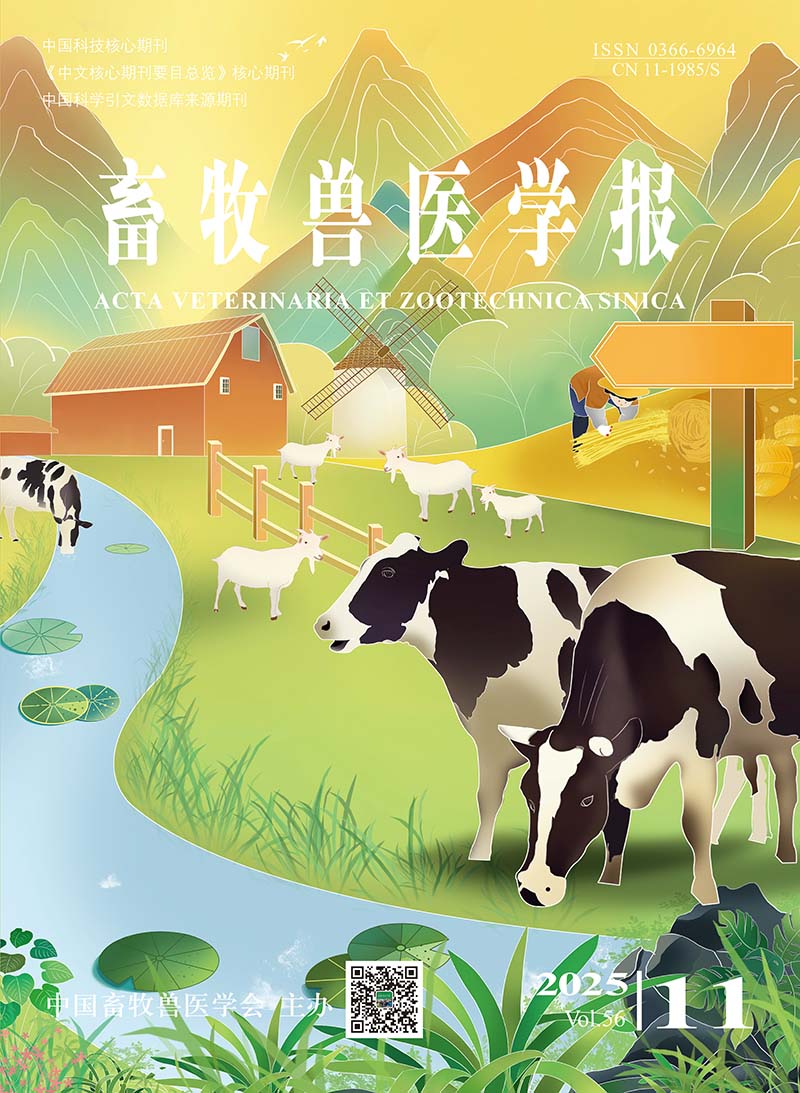The purpose of this experiment was to determine the colonization of fungal diversity in rumen and feces of Inner Mongolia white cashmere goats at different ages by high-throughput sequencing technology, and to provide data basis for subsequent research on early nutritional regulation of cashmere goats. Three female lambs of Inner Mongolia white cashmere goats of each days of age (10, 30, 50 and 150) with body weight of (4.99±0.13), (7.71±0.52), (13.83±0.18) and (20.60±0.81) kg at 10, 30, 50 and 150 days of agerespectively were selected according to the normal production management and feeding in the farm area, each lamb was a replicate, all together 12 lambs, a total of 12). They were slaughtered and rumen fluid (group R) and feces (group F) were taken. The ITS region of rumen and fecal fungi was amplified by specific primers ITS1F/ITS2R, and sequenced by Illumina Miseq PE300 platform. The results showed that: 1) A total of 1 636 055 clean tags were obtained from 24 samples in this experiment, with an average of (68 168±24 317) clean tags per sample and an average length of (244±28) bp per sequence. 2) With the increase of age, the total OTU of rumen and fecal fungi and the OTU shared with the next day-of-age decreased slightly at first, but then increased gradually. The fungal OTUs shared by rumen and feces at 10, 30, 50 and 150 days of age accounted for 34.22%, 20.87%, 27.63% and 20.53% of the total number of OTUs detected in rumen and feces at the same age, respectively. 3) There was no significant difference in Shannon, Simpson, Ace and Chao indexes of rumen fungal community with the increase of age (P>0.05), but the Shannon and Simpson indexes of fecal fungi at 50 and 150 days of age were significantly higher and lower than those at 10 days of age, respectively (P < 0.05). At 50 days of age, the Shannon and Simpson index of fungi in rumen were significantly higher and lower than those in fecal group (P < 0.05). 4) The β diversity of rumen fungi at 50 days of age and 150 days of age was significantly clustered into one group (P < 0.01), and was significantly separated from the β diversity of rumen fungi at 10 days of age and 30 days of age (P < 0.01). The β diversity of fecal fungi of 50-day-old and 150-day-old were significantly independent distribution and were seperated from 10-day-old and 30-day-old were significantly independent distribution (P < 0.01). In addition, the similarity of fungi β diversity in rumen and feces groups at 150 days of age was higher than that in other age groups. 5) At 10, 30, 50 and 150 days of age, the composition of rumen and fecal fungi was similar at the phylum level, which were Ascomycota, Unclassified_k_fungi, Neocallimastigomycota, Basidiomycota and Mortierellomycota, among which Ascomycota was dominant. At the genus level, the composition of rumen and fecal fungi was slightly different. The species with the highest abundance in rumen were Unclassified_k_fungi at 10 and 50 days of age, Sporormiella and Saccharomyces at 30 and 150 days of age, respectively. The species with the highest abundance in feces were Unclassified_k_fungi and Neocallimastix at 10 and 50 days of age, respectively, and Cleistothelebolus and Cladosporium at 50 and 150 days of age, respectively. 6) Further LefSe analysis at the phylum level showed that Neocallimastigomycota was significantly enriched in the rumen aged 150 days and in feces of Inner Mongolia Cashmere Goat aged 50 days(P < 0.05). When comparing the rumen and fecal fungal communities at the same age, Unclassified_k_fungi and Ascomycota were significantly enriched only in the rumen and feces at 150 days of age. 7) Based on FUNGuild function prediction, rumen fungi were dominated by Unclassified and Pathotroph at 10 and 50 days of age, respectively, and Saprotroph was dominant at 30 and 150 days of age. Fecal fungi were mainly Pathotroph-Saprotroph-Symbiotroph at 10 and 150 days of age, and Saprotroph at 30 and 50 days of age. It can be seenconcluded that with the development of Inner Mongolia Cashmere Goat lambs, the rumen fungal community is gradually conducive to the degradation of fiber in the feed, and the digestion ability is significantly enhanced. There are still many high-abundance and unclassified species in the rumen and feces of young age, and their functions are not yet clear, so further research is needed.






